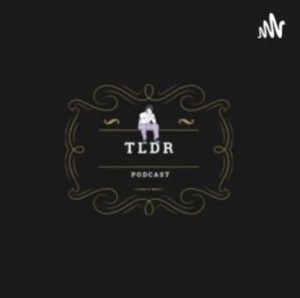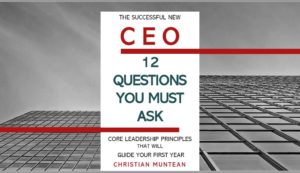Executive Succession: Are High School Boys Better Prepared Than You?

“Leaders are also responsible for future leadership. They need to identify, develop, and nurture future leaders.” – Max DePree

The Great Handoff
Baby Boomers hold roughly 75% of all executive positions in the United States. Most are ready to retire or move on soon. Many have already begun.
It’s the Great Handoff. And it’s already begun. It’s not only Baby Boomers – although they are the largest demographic.
But, for far too many, the Great Handoff plays out much more like the Great Fumble.
Most leaders have, at best, an abstract sense of what their succession will look like. Or when.
As a result, most successions aren’t planned. They are forced. They happen because someone gets sick, burned out, can’t resolve a conflict, has a family problem – or they die.
Even planned successions go wrong. Often due to an outgoing leader who unilaterally appoints their heir apparent. Outgoing leaders usually have too many blind spots to do this well.
This is especially true for small and medium-sized companies. Larger companies are more likely to have put thought into their succession process. But even they can be caught off guard.
Unstable Times Call for Stable Leadership
Over the last couple years, CEO turnover (planned and unplanned) has increased. This will likely continue in the coming years.
Succession creates obvious instability.
But also, the next few years will see high rates of change: Social, economic, technological, geopolitical… These changes represent both challenges and opportunities for growth.
Organizations with stable leadership will outperform everyone else. If they prepare for a smooth, planned transition they will enjoy a distinct advantage.
They can focus on their objectives. Everyone will be focused on chasing their fumbled succession.
Are You as Prepared as a Group of High School Boys?
I ran the 4X100 relay in high school. We set the school record. As individuals, we were fast. But we weren’t the fastest. I know I wasn’t.
But we mastered the hand-off. We won because we practiced passing the baton more than anyone else.
A good relay hand-off is technical. It can go wrong in lots of ways.
Your leadership hand-off is far more technical. And far more important.
Is it a stretch to suggest that it might take more time and effort to prepare for succession than a relay hand-off?
Unfortunately, many will give this less effort and attention than high-school boys practicing to win a race.
Something to think about.
Three Handoffs
To milk the relay analogy for all its worth: In a relay race, there are three handoffs. All should be the same.
In an organization, there are actually three different kinds of successions. Each is needed. Building one helps build the next. Having all three will result in a better run organization.
Here they are:
1) Unplanned / Emergency Succession: One executive was hit by a truck (he survived after months of recovery). Another died unexpectedly. Another only provided weeks of notice before resigning. Another was fired.
Unplanned, emergency events.
These plans are the building blocks of all succession planning.
Done well, they create stability within the organization. They provide clarity about the temporary redistribution of roles and responsibilities. They create a defined process for the future provision of leadership.
Unplanned/Emergency Succession plans include (but are not limited to) topics such as:
- Defining interim leadership (team or individual)
- The process for selecting a new leader
- Clarifying the redistribution of roles and responsibilities
- Determining interim focus priorities
- Communications planning – internally and externally
- Updating contact information: Key clients, contracts, banks, insurance, etc.
- Compensation changes during the interim period
- Security: Key, codes, and passwords
This planning creates a solid platform for other kinds of succession planning. It is the most “nuts and bolts” focused of the plans.
If this planning is done first, the other plans are easier.
2) Planned Leadership Succession: This is the kind of succession most people think about.
But most try to answer the wrong question with the plan.
They ask, “How do I replace myself?” or “How do we replace dear leader?” That question sends people off down rabbit trails that lead to nowhere useful.
Instead, here are the questions you should ask:
- What is our big vision? What are we trying to do?
- What key strategy should we use to achieve this?
- What kind of leader is best suited to get us there?
If you’ve completed your Unplanned/Emergency Succession Plan and have solid answers to the three questions above, you’ve done most of the work for this plan.
After this, Planned Leadership Succession Planning usually includes:
- Defining a selection process for the new leader
- Training and mentoring internal prospects (this begins pre-succession)
- Choosing an external recruitment process
- Helping the current leader complete “legacy” projects
- Stabilizing the organization (wrapping up old initiatives, in many cases delaying the start of new ones)
- Creating succession timelines
- Reclarifying expectations, roles, and responsibilities for the incoming CEO
- Reviewing compensation philosophies and structures
And so on…
I think you can see that most of this work happens before a planned succession occurs. You need the plan before you can start that work. Don’t wait.
3) Staff Succession Planning: Many leaders have a vision for the future. Very few have a clear sense of the people they will need to build that future.
Setting succession aside, organizational growth is often stymied by not having the right people in place when you need them. This is accentuated during succession.
When the current CEO leaves, anticipate staff changes. They almost always occur. Some people leave. Some positions change. New leaders often restructure or build new teams.
Here’s a simple version of how to build a Staff Succession Plan:
- Define Your Vision: Develop your vision and strategy for the future (see Planned Leadership Succession).
- Describe Your Future Team: What is the ideal organizational chart needed to implement that strategy and fulfill that vision – with room to spare.
- Examine Your Current team: Clarify your current organizational chart.
- Close the gap:
- Which current team members will be available and able to fill future positions?
- What training or support will they need?
- Which positions will need to be hired in? How long does it take to:
- Onboard those positions and get them up to speed?
- Recruit and select that role?
- Based on your answer to the above – when should you start looking for these people?
To Conclude
One of the most important decisions an organization will make is succession-related.
What I describe above may sound like more work than you wanted. But it really isn’t hard. It just takes doing.
And if done well, you’ll have a healthier, more resilient organization overall. Even if succession is years away.
Take good care,
Christian
 In the podcast Thought Leaders Driving Returns (TLDR), I’m interviewed by host Hunter Guthrie about how important mindset is in leadership and about effecting cultural change in the face of transition. LISTEN HERE.
In the podcast Thought Leaders Driving Returns (TLDR), I’m interviewed by host Hunter Guthrie about how important mindset is in leadership and about effecting cultural change in the face of transition. LISTEN HERE.
Are you interested in learning more about becoming a successful CEO? If so, get a free copy of my book The Successful New CEO. Not a new CEO? I’ve been told by “old hands” that they felt any CEO should read this. So, click here to get your copy today.
by “old hands” that they felt any CEO should read this. So, click here to get your copy today.
Let’s connect.
I’m passionate about helping leaders to create workplaces they love going to and increasing the value of the services they offer. My results-oriented approach is tailored to each client’s specific situation and needs. As a leadership coach, I have developed a wealth of resources to help you and your team grow and become stronger.
Weekly Newsletter – sign up to receive my weekly articles addressing critical leadership challenges and issues.
The Leadership Coach Podcast – In my podcast, we explore effective, high-impact, and enjoyable leadership. Subscribe.
Resources – Visit my website’s Resources page for e-books, webinars, training, and leadership coaching opportunities for you and your team.
There are 𝟭𝟮 𝗰𝗿𝗶𝘁𝗶𝗰𝗮𝗹 𝗾𝘂𝗲𝘀𝘁𝗶𝗼𝗻𝘀 to ask before accepting a new CEO position. Do you know what they are? Instantly download my free e-book here.
Find the value of your company with my free assessment tool: The Value Builder System
The Value Builder System™ is a 13-minute online questionnaire that evaluates your business on the eight factors that contribute more to its attractiveness and value. These factors are scored on a scale of 1-100. Businesses that score over 80 are likely to command 70%-100% higher value than others.
Opportunities
Free Resource: How To Accomplish More Without Doing More is a workbook I created to walk leaders through a process of helping you own your calendar, liberate your time, and still get more done. Download it for free!
Executive and Leadership Coaching: Do you feel overwhelmed? Are you not getting the results you expect from the effort you are putting in? Do you find yourself facing similar challenges time and time again? Would you like to change specific ways of relating or reacting? If you would like to experience predictable, measurable growth Contact me.
Profitable Exit Strategy Workshop: Are you a business owner or partner? Over 55? Starting to think about exiting your business or active management in the next 3-5 years?
- Curious about what your business might be worth?
- Would you like to discover the specific steps you need to take to increase its value and become highly attractive to a buyer?
- Are you planning on handing it over to family or employees and you want to ensure long-term success?
If so, contact me now
Article Categories
Popular articles

Download my free 10-page eBook:
How To Accomplish More Without Doing More:
Eight Proven Strategies To Change Your Life
Discover how to save eight hours during your workweek-even if you're too busy to even think about it. The resource every maxed out executive needs.

